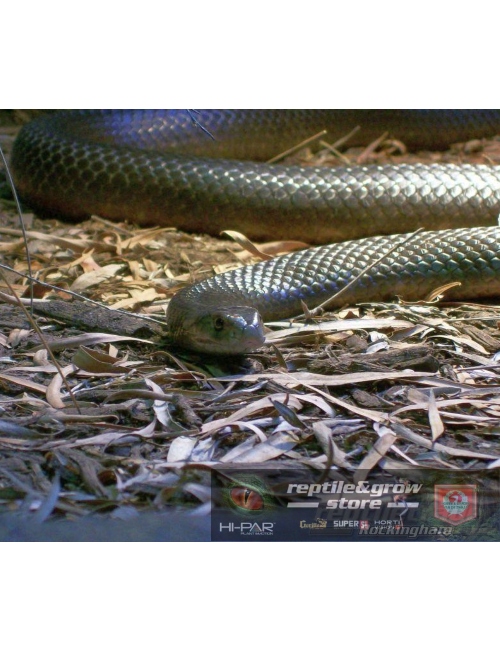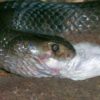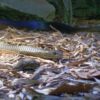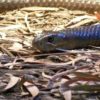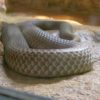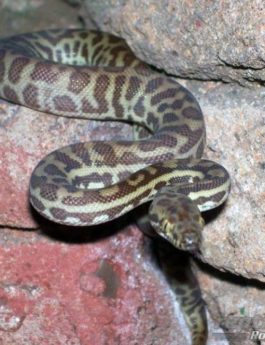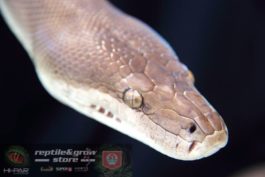Largest Pseudechis. Ground colour highly variable; pale brown, olive, rich reddish-brown to coppery-brown. Populations from southern parts of range may be darker to almost black. Individual scales usually bear paler bases, tending to form reticulated pattern. Ventral surfaces cream to white. Iris reddish-brown. Midbody scales in 17 rows. Subcaudal scales usually single anteriorly and divided posteriorly; occasionally all single. TL 2.0m, though individuals over 3m have been recorded. Distinguished from P. guttatus in possessing fewer midbody scale rows (17 vs 19) and cream (vs dark grey) ventral colouration. Differs from P. butleri in bearing weak, uniform to reticulated pattern. Differs further in lacking black base to each ventral scale, and fewer ventral scales (189-207 vs 204-216).
Shelters in any terrestrial sites available; abandoned burrows, soil cracks or hollow logs, and beneath surface debris. Widespread throughout Australia, excepting humid eastern and southern areas. May be encountered in virtually all subhumid to arid habitats throughout its range; from woodlands and monsoon forests to gibber and sandridge deserts. Possibly extralimital in New Guinea.
Terrarium: Mulga snakes do not require an enclosure with very much height, however if given the correct environment with climbing enrichment they will explore their enclosure. The enclosure needs to be large enough to provide multiple hide rocks and maintain a thermal gradient, a terrarium that is 120x60x60cm (WxDxH) would be suitable to house a mature Mulga. Terrarium’s must be lockable and escape proof.
Lighting & heating: UVB lighting is not essential to Mulga snakes, however a low 2.0 spectrum fluorescent globe can be used for viewing purposes. Heating can be provided with a heat tile, mat or cord to maintain a ground surface temperature of 32°C in the hot spot. Ambient heat can be provided with an infrared heat globe to maintain a daytime temperature of 34°C in the warm end and 25°C in the cool end, on warmer days you may not need to turn on the heat globe as the ambient temperature of the enclosure may already be high enough. A thermometer should always be used to monitor the temperature within the enclosure.
Furnishings: It is important to provide your Mulga with a hide cave in the warm end, a water bowl at the cool end, and artificial plants will give coverage and decoration. Large Logs and vines can be used within the enclosure to provide climbing enrichment. A pet bedding wood chips such as Chipsi or Critter Crumble can be used as a substrate. It is important to keep the enclosure basic and easy to maintain, as a cluttered terrarium can make it very dangerous when you need to remove your venomous snake from the enclosure for any reason.
Food in captivity: All snakes in captivity must be fed dead food. A Mulga snake will eat a variety of frozen and thawed mice, rats and chickens of appropriate sizes. On average they will have 1-2 food items every 7-10 days.
The essentials:
- Terrarium of appropriate size
- Tummy heating
- Thermometer
- Infrared Heat globe
- Water bowl
- Substrate
- Hide cave

